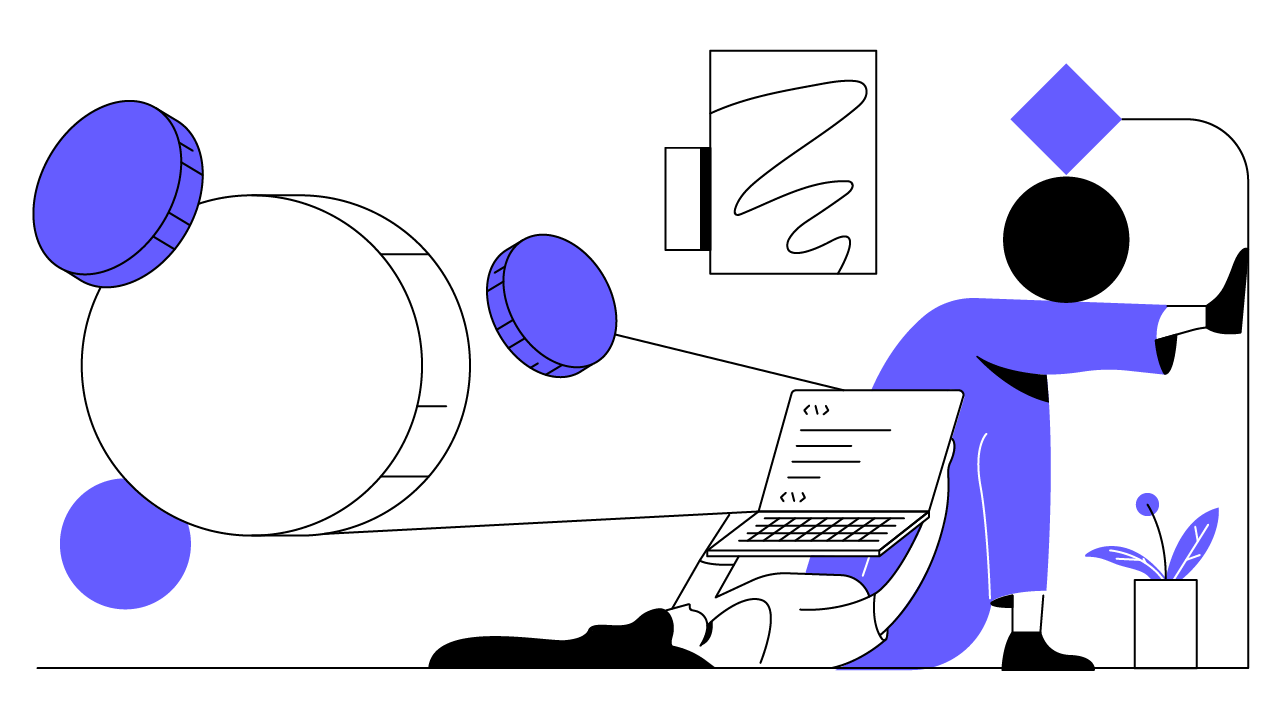GameFi: Incentivized Gaming on Blockchain
GameFi refers to blockchain-based games that incentivize players by issuing rewards like cryptocurrencies, virtual land, NFTs, and other digital assets.
Updated July 7, 2022 • 3 min read

Summary
Traditional video games are held on centralized servers, meaning users often pay subscription or license fees to access the platform. In contrast, game finance (GameFi) solutions are built on blockchain technology, eliminating the need for a central authority. In place of this intermediary, GameFi integrates elements of non-fungible tokens (NFTs), play-to-earn (P2E) gaming, decentralized finance (DeFi), and the metaverse to deliver a unique gaming experience. The resulting model allows players to maintain ownership of their in-game assets and provides an opportunity to earn money.
What Is GameFi?
Like most online systems today, traditional video games are held on centralized servers owned by gaming companies. These entities maintain complete authority over the gaming environment, setting the foundation for how and when gamers can play the game. Unfortunately, this centralized structure also means that the gaming companies, not players, hold accumulated in-game purchases. As a result, these items have no value in the real world.
In contrast, the decentralized nature of game finance (GameFi) products ensures players own their in-game assets. But what is GameFi? To summarize, GameFi refers to blockchain-based games that incentivize players by issuing rewards like cryptocurrencies, virtual land, non-fungible tokens (NFTs), and other digital assets. Players usually earn these rewards by participating in challenges, reaching higher GameFi tiers, or progressing through game levels.
These games range from simple lotteries to elaborate multi-player environments that incorporate hundreds of different in-game assets and different virtual environments.
How Does GameFi Work?
In technical terms, GameFi combines multiple subsets of the blockchain ecosystem, including NFTs, play-to-earn (P2E) gaming, decentralized finance (DeFi), and the metaverse. Below, we’ll break down how each of these elements comes together to form the concept of GameFi.
Non-Fungible Tokens (NFTs)
In traditional games, players often purchase in-game assets that enhance some element of gameplay. For example, players can buy cosmetic items like new armor or performance-enhancing assets like better weapons. However, these items are generally limited to a specific gaming console or virtual environment, meaning players can only use them where purchased.
In contrast, blockchain-based games tokenize in-game assets, meaning a unique NFT represents each. As a result, players can purchase in-game assets anywhere and transfer them between different gaming environments. Players can also exchange these GameFi tokens on secondary marketplaces, retaining the value of their initial investment. Popular blockchain games like Axie Infinity and Decentraland highlight the benefits of holding in-game assets as P2E NFTs.
Play to Earn (P2E)
Under the P2E gaming model, players maintain control over their in-game assets and are provided opportunities to make money. For example, in the popular Axie Infinity game, players use their Ethereum-based NFTs (Axies) to earn Sweet Love Potion (SLP) tokens that can be used to breed new Axies. Like the originals, these new Axies can be exchanged on secondary markets for a profit. In addition, the game also incorporates the AXS reward token that players earn after reaching a specific ranking. In short, players earn rewards while maintaining ownership of their in-game assets, the core benefits of P2E gaming.
It’s worth noting that while most P2E games don’t require an upfront investment, this may not always be the case. For this reason, players should always exercise due diligence to ensure they understand how the game works, who’s behind it, and the trade-off between initial investment and potential rewards.
Decentralized Finance (DeFi)
In some cases, GameFi crypto projects also integrate DeFi functionality such as swapping, yield farming, and mining. For example, players can stake their P2E crypto tokens to earn rewards, access new levels, or unlock exclusive items. In addition, some GameFi projects have also established decentralized autonomous organizations (DAOs) to help guide game development. Allowing players to participate in decision-making makes these GameFi platforms even more decentralized.
Metaverse
The metaverse concept has made GameFi more complex. Several P2E gaming projects like Decentraland, The Sandbox, and Upland sell virtual land as NFTs, allowing players to build on their digital plots. For example, My Neighbour Alice utilizes a P2E crypto model that enables landowners to rent or sell land or earn rewards while holding it.
The Future of GameFi
The GameFi industry has seen immense growth over the past year, and the trend continues in 2022. As of May 2022, there were 1,600 blockchain games listed on DappRadar. It’s also important to note that these games are being developed across several blockchains, including Ethereum, Polygon, Harmony, Solana, and BNB Chain (BNB). As more gamers become aware of blockchain technology, GameFi will likely become even more popular.
Cryptopedia does not guarantee the reliability of the Site content and shall not be held liable for any errors, omissions, or inaccuracies. The opinions and views expressed in any Cryptopedia article are solely those of the author(s) and do not reflect the opinions of Gemini or its management. The information provided on the Site is for informational purposes only, and it does not constitute an endorsement of any of the products and services discussed or investment, financial, or trading advice. A qualified professional should be consulted prior to making financial decisions. Please visit our Cryptopedia Site Policy to learn more.

Is this article helpful?


